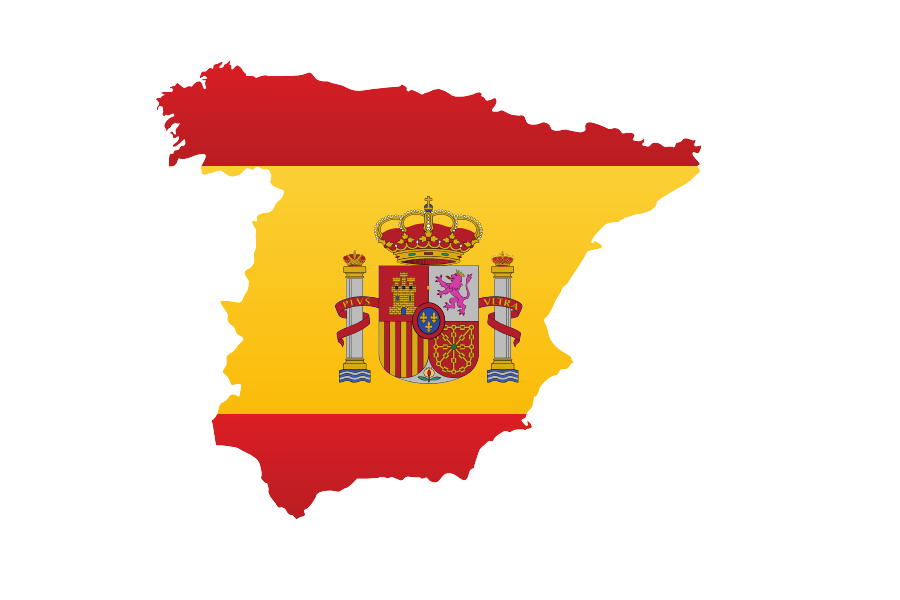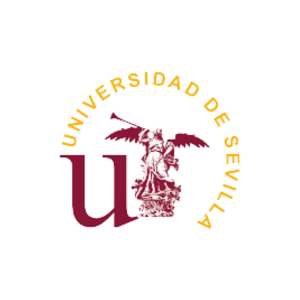SPAIN
Overview of the Spain
Spain, located in Southwestern Europe, shares the Iberian Peninsula with Portugal and is bordered by France and Andorra to the northeast. Its diverse culture is shaped by its rich history, including influences from Roman, Moorish, and Christian periods. The climate varies from Mediterranean along the coast to continental in the interior and oceanic in the north. Spain’s healthcare system is well-regarded, and its transport infrastructure is extensive, including high-speed rail networks and modern roadways.

Spain boasts advanced infrastructure with a high global ranking in quality of life and economic performance. It is a popular destination for immigrants due to its vibrant culture, favorable climate, and strong economy, offering numerous opportunities in sectors like tourism, technology, and agriculture. Safety for immigrants is generally high, supported by robust legal protections and integration programs.
Percentage Distribution of Non-Immigrant Student Visa Holders in Spain (2014-2023)
Percentage Distribution of Non-Immigrant Visa Holders in Spain (2014-2023)
VISAS
Climate and Seasons

SPRING
March to May
Minimum: 8°C
Maximum: 20°C

SUMMER
June to August
Minimum: 15°C
Maximum: 30°C

AUTUMN
September to November
Minimum: 10°C
Maximum: 25°C

WINTER
December to February
Minimum: 0°C
Maximum: 15°C
WHY STUDY IN SPAIN?
Studying in Spain offers a blend of academic excellence and vibrant cultural experiences. Spain is home to prestigious universities like the University of Barcelona and the Autonomous University of Madrid, known for their high-quality education and diverse programs. The country’s rich history and cultural heritage provide a unique backdrop for learning, while its affordable tuition and cost of living make it an attractive option for international students. Spain’s pleasant Mediterranean climate enhances the overall student experience, with mild winters and warm summers. Additionally, Spain’s strategic location in Europe allows students to easily travel across the continent. The country’s dynamic lifestyle, coupled with opportunities for internships and language acquisition, ensures a well-rounded educational journey. Studying in Spain not only enriches academic knowledge but also immerses students in a culturally and socially stimulating environment.
COURSES
Computer Science
Business Analytics
MBA
Mechanical Engineering
Major Courses Opted by Students (2014-2023)

Test Preparation at PVR Global Educational Services
PVR Global Educational Services offers tailored training for GRE, IELTS, PTE, SAT, GMAT, and Duolingo tests. Expert instructors provide personalized study plans, practice materials, and mock exams to boost proficiency in reading, writing, listening, speaking, and quantitative skills. Flexible scheduling and comprehensive support help students achieve high scores and succeed in their academic and professional endeavors.
Quick Facts about Spain
Spain boasts renowned institutions like the University of Barcelona and Complutense University, offering diverse and high-quality academic programs.
Compared to other Western European countries, Spain offers relatively low tuition fees and cost of living for international students.
Students experience Spain’s vibrant culture, rich history, and diverse traditions, enhancing their educational and personal growth.
Studying in Spain provides an excellent chance to learn or improve Spanish, a valuable asset in global communication.
Spain enjoys a pleasant Mediterranean climate with warm summers and mild winters, making it ideal for year-round outdoor activities.
Spain’s central location in Europe facilitates easy travel to other European countries, broadening cultural and academic experiences.
Spain offers a lively student life with numerous festivals, cultural events, and vibrant nightlife, enriching the overall university experience.
Courses Opted by International Students in Japan (2014-2023In Percentage)
Education System in Spain
Primary (6-12 years) and secondary education (12-16 years) are compulsory. Focuses on fundamental skills and broad curriculum.
Grade System: 1-10 scale (1-4: failing, 5-6: pass, 7-8: good, 9-10: excellent).
Duration: Primary (6 years), Secondary (4 years).
Average Fee: Public schools are free; private schools charge between €2,000-€5,000 annually.
Includes higher education institutions offering undergraduate, graduate, and doctoral programs. Provides specialized knowledge and research opportunities.
Grade System: 0-10 scale, with grades above 5 considered passing.
Duration: Typically 3-4 years for bachelor's, 1-2 years for master's, and 3-4 years for doctorate.
Average Fee: Public universities range from €1,000-€3,000 per year; private institutions can charge €6,000-€12,000 annually.
Undergraduate programs providing fundamental knowledge in various fields, preparing students for professional careers or further study.
Grade System: 0-10 scale, with 5 as the minimum passing grade.
Duration: 3-4 years.
Average Fee: €1,000-€3,000 per year in public universities; €6,000-€12,000 in private institutions.
Graduate programs offering advanced knowledge and specialization in specific fields, often including research and practical experience.
Grade System: 0-10 scale, with 5 as the minimum passing grade.
Duration: 1-2 years.
Average Fee: €1,500-€4,000 per year in public universities; €8,000-€15,000 in private institutions.
Doctoral programs focused on original research, contributing new knowledge to a field. Involves extensive study and dissertation work.
Grade System: No standard grading; based on dissertation evaluation and defense.
Duration: 3-4 years.
Average Fee: €2,000-€4,000 per year in public universities; €8,000-€20,000 in private institutions.

Identifying the Right Institution
Check for international and national rankings and accreditations to ensure the university meets high academic and operational standards.
Evaluate the variety and quality of programs offered, including faculty qualifications, research opportunities, and alignment with career goals.
Consider universities with strong research facilities and programs, contributing to cutting-edge knowledge and practical experience in your field.
Assess the quality of campus facilities like libraries, labs, and student accommodations to ensure a supportive learning environment.
Look for universities with strong links to industries and businesses, offering internships, job placements, and networking opportunities.
Review available support services, such as academic advising, counseling, and career services, to ensure comprehensive support during your studies.
Research the achievements of alumni, including career progression and contributions to their fields, to gauge the university's overall impact and reputation.
No of Students placed in different sectors. (2014-2023In Percentage)
Success Rate of Indian Students in the Spain by Sector (2014-2023In Percentage)
Getting a Spain Visa
Identify the specific visa type you require based on your purpose of travel—tourism, study, work, or residency. Each type has distinct requirements and conditions.
Review the detailed visa requirements on the official Spanish consulate or embassy website. Requirements may vary by visa type and include financial, educational, and travel documentation.
Collect all necessary documents, including passport, visa application form, proof of financial means, travel insurance, and any other documents specific to your visa type and purpose.
Register an account on the Spain visa application portal or the consulate’s website. This is essential for submitting your application and tracking its status.
Fill out the visa application form accurately online, providing personal details, travel information, and purpose of visit. Double-check for errors before submission.
Pay the required visa fee through the designated payment method. Fees vary depending on the type of visa and your nationality. Keep the payment receipt.
If your visa application requires biometric data, schedule an appointment to provide fingerprints and a photograph at the designated visa application center or consulate.
Attend a visa interview if requested. Be prepared to answer questions about your travel plans, financial status, and purpose of visit. Dress professionally and provide honest answers.
After submission, wait for the processing period, which varies depending on the visa type and consulate. Track your application status through your online account.
Once approved, receive your visa either by mail or in person at the consulate. Verify all details to ensure accuracy and prepare for your trip.
Apply well in advance of your travel date, ensure all documents are current, and consult the consulate for any specific requirements or changes in visa policies.
List of Universities










Intake details
Intake | Start Dates | Remarks |
|---|---|---|
Fall | September to October | Primary intake for most programs; peak admission period. |
Spring | February - April | Secondary intake; fewer programs available compared to Fall. |
Summer | May - July | Limited programs; typically for accelerated courses or specific programs. |
Winter | January - February | Not commonly used; available for some programs with specific start dates. |
Deadlines
Deadline Type | Fall Intake | Spring Intake |
|---|---|---|
Scholarship Deadlines | January - March | September - November |
Admission Deadlines | May - June | November - December |
Best Time to Start the Process | September - November | March - June |
Last Date to Apply for Admission | June - July | December - January |
Documents required
Document Type | Requirements | Remarks |
|---|---|---|
Passport | Valid for at least 6 months, with blank pages | Ensure passport is up-to-date and undamaged |
Visa Application | Completed form, signed and dated | Follow specific instructions from the consulate |
Proof of Financial Means | Bank statements, scholarship letters, or sponsor letters | Demonstrate ability to cover tuition and living expenses |
Academic Transcripts | Official transcripts from previous institutions | Translated into English or Spanish if needed |
Letter of Motivation | Personal statement explaining why you want to study | Tailor to each university’s specific requirements |
Letters of Recommendation | Typically 2-3 letters from professors or employers | Must be recent and on official letterhead |
Proof of Language Proficiency | TOEFL, IELTS, or other relevant test scores | Required for non-native speakers |
Medical Insurance | Proof of coverage for the duration of stay | Must meet Spanish visa requirements |
Visa Fee Payment | Receipt of payment for visa application fee | Keep a copy of the payment receipt |
Passport Photos | Recent passport-sized photos | Check specifications for photo size and format |







